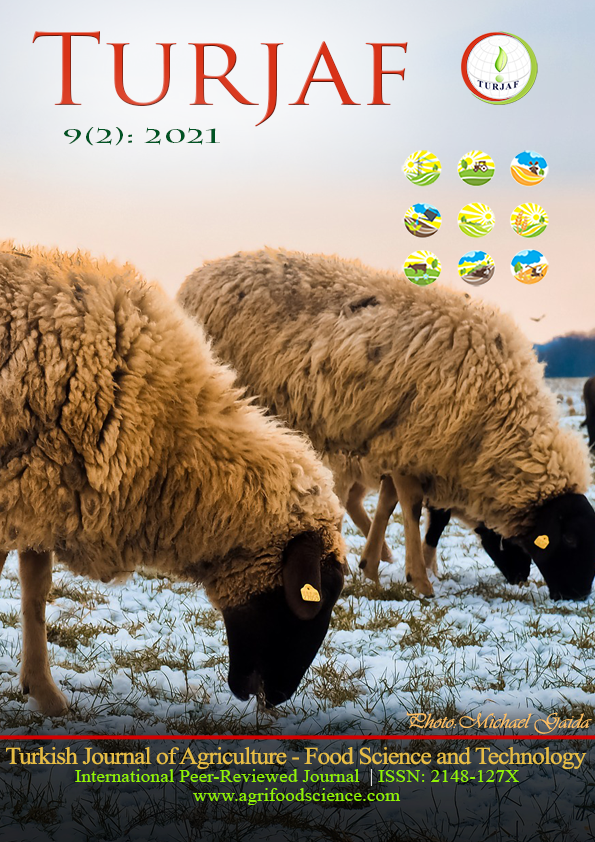The Effects of Waste Jam Mixture on Silage Fermentation, and in Vitro Digestibility of Alfalfa Silages
DOI:
https://doi.org/10.24925/turjaf.v9i2.301-307.3869Keywords:
Alfalfa, Jam, Alternative Silage Additives, Silage, RecylingAbstract
This research was planned to determine the effects of the addition of waste jam mixture on the fermentation and in vitro digestibility of alfalfa silage. Alfalfa was harvested at the beginning of flowering in October and withered. The waste jam mixture is first divided into two parts as solid and liquid by means of a filter. To the control group was added 20 ml / kg alfalfa pure water. Liquid part; Jam-I silage (RI), 50 mg liquid jam + 20 ml pure water / kg alfalfa; Jam-II silage (RII) was added as 100 mg liquid jam + 20 ml pure water / kg alfalfa. The solid part is; Jam Particle-I silage (RPI), 30 mg jam particles + 30 ml pure water / kg alfalfa; Jam Particle-II silage (RPII) was prepared so that 60 mg jam particles +60 ml pure water / kg alfalfa. The silages were allowed to fermented in a closed storage for 60 days. The addition of jam and jam particles reduced the pH and neutral detergent fiber contents of alfalfa silage. In the study, the highest lactic acid content was found to be 100.28 g/kg dry matter (DM) in the RII group and the lowest was 23.07 g/kg DM in the control group. The addition of jam and jam particles to the alfalfa resulted in a significant increase in the enzimatic solubility of organic matter compared to the control group. The study showed that high quality alfalfa silages can be prepared by adding the liquid part of the jam at the level of 100 mg/kg, especially in the spring or autumn where the rainfall is abundant and there is no possibility of drying.Downloads
Published
22.02.2021
How to Cite
Soycan Önenç, S., & Yayla, D. (2021). The Effects of Waste Jam Mixture on Silage Fermentation, and in Vitro Digestibility of Alfalfa Silages. Turkish Journal of Agriculture - Food Science and Technology, 9(2), 301–307. https://doi.org/10.24925/turjaf.v9i2.301-307.3869
Issue
Section
Research Paper
License
This work is licensed under a Creative Commons Attribution-NonCommercial 4.0 International License.









